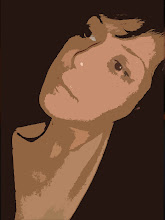I believe that drawing is the most basic and the most important skill to all artists. Myself had numerous problems when I started drawing and it got more complex when I started live human figure drawing. For years, I was challenging those problems with no enormous success until I got a hint in a book, which got many of my questions answered! Once after getting this hint, I experienced a remarkable improvement in my drawing.
I'd like to share some very useful tips of this book with artists who are in the same problem of mine.
What do you think about while drawing?
- Your mistakes?
Do you blame something when you're not satisfied enough of the results? You blame:
- Your tools?
- Your support?
- Your model?
- The light?
- The seat?
- Your point of view?
Bert Dodson (1990) in his book, Keys to Drawing, talks about internal dialogues while drawing, which either help or hinder the artist's drawing process . He explains that drawing is a coordination between the hand, the eye, and the mind. Many students start a critical dialogue once they are not happy with the result of their drawing.
He believes critical dialogues don't help improvement of the work, instead practical dialogues let the artist properly see the differences and explores the problem.
Critical Dialogue
- That arm doesn't look right
- The foot doesn't possibly that way
- I never draw the legs right
- Why do I have so much trouble drawing faces?
Practical Dialogue
- What does that shape look like?
- Is that shoulder line horizontal or slightly tilted?
- Is the distance from knee to foot greater or less than the distance from knee to waist?
- How bumpy is that contour?
Looking at two above types of dialogues can show you the different and even you have critical dialogue habit, it's not so hard to break it and switch on practical one.
Subscribe to:
Post Comments (Atom)





No comments:
Post a Comment